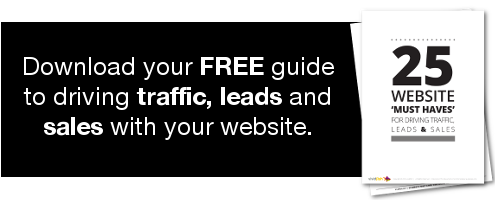FAQ: Can you show us How to generate enquiries with our website?

Can you show us how to generate enquiries with our website?
This is something that comes up time and time again. This post will walk you through the basics to get you started.
It can often be tricky. People may be visiting your website more than ever but leaving without making an enquiry. They might even read your blog on a regular basis, yet they leave the site without getting in touch with a query. Whilst traffic to your website shows that people appreciate your content, which in the process will help your search engine rankings, the primary goal is to convert interest into sales. Here are eight tips on how to turn your website into an enquiry engine.
- Know your target market
If your customers and target audience prefer their information in short, sharp, digestible bursts, they won’t make time to trawl through paragraphs of text. If, on the other hand, your company is music-based, visitors expect to be able to listen to sample tracks. These are just two examples of how web content needs to be appropriate, relevant and cater to your market at all times. This doesn’t mean you can’t try new things, but always put thought into suitability and purpose.
- Make your content relatable
Though you need to communicate who you are and what you do, including your company philosophy and key services, don’t make your website all about you. Rather than a showcase, think of your site as a two-way conversation. For instance, if you provide IT services, give examples of common problems and how your business can help solve them. This will make the user experience flow naturally and provide a range of relatable scenarios to attract and retain their interest.
- Be easy to reach
We’ve come across websites that look great and work perfectly, yet give barely any information on how to get in touch. Sometimes it’s a case of options being limited, and other times there’s plenty of info but it’s hidden away. You must remember that visitors have limited time and patience, so you need to make it easy for them to contact you. A phone number and email address in your header or footer works well, with full details (postal address, contact form, social media links) available on a dedicated contact page. If your premises are open to the public, an integrated Google map will also prove useful.
- Quid pro quo
Something for something. If you offer visitors a free ebook, whitepaper or other useful resource in exchange for a little data, such as a name and email address, you can build your database naturally and effectively. You’ll also know that these new contacts are interested in your products and haven’t just signed up willy-nilly. This data can then be used to expand and evolve your email campaigns, which in turn will direct more traffic to your website.
- Optimise for search
Your website can look pretty and seem to have everything it needs, but how about its infrastructure? This is what really gets the attention of Google, such as meta code, alt image titles, headers, Google Analytics tags, navigation and speed. If your site is missing any of these, it could rank lower in search listings, resulting in fewer people finding you to make an enquiry.
- Professionally written copy
It’s true that many people are visual learners and an image or video will usually get attention more quickly than text, but your copy is still incredibly important. If your written content is sloppy, vague, too long or short, copied from elsewhere or generally dull, visitors won’t get as far as the enquiry stage. Make your copy pop!
- Testimonials and case studies
Everyone can big themselves up, but people are far more likely to believe feedback given by customers. It can take a little while to get testimonials from people and to write engaging case studies, but the ROI is well worth it. Combine them with project images when possible and visitors will soon want you to provide the same great service for them.
- Offer something
Freebies go a long way, but they need to have value and longevity. Something that can be actioned immediately, such as this very list of tips, can have a long-term positive effect. It can any form you wish, from a download to a free trial; the key is to give your audience a reason to engage now and come back for more on a regular basis. This build relationships, increases trust for your brand and ultimately leads to direct enquiries.
Want to know more? Download our guide to 25 website must-haves for driving traffic, leads and sales.
